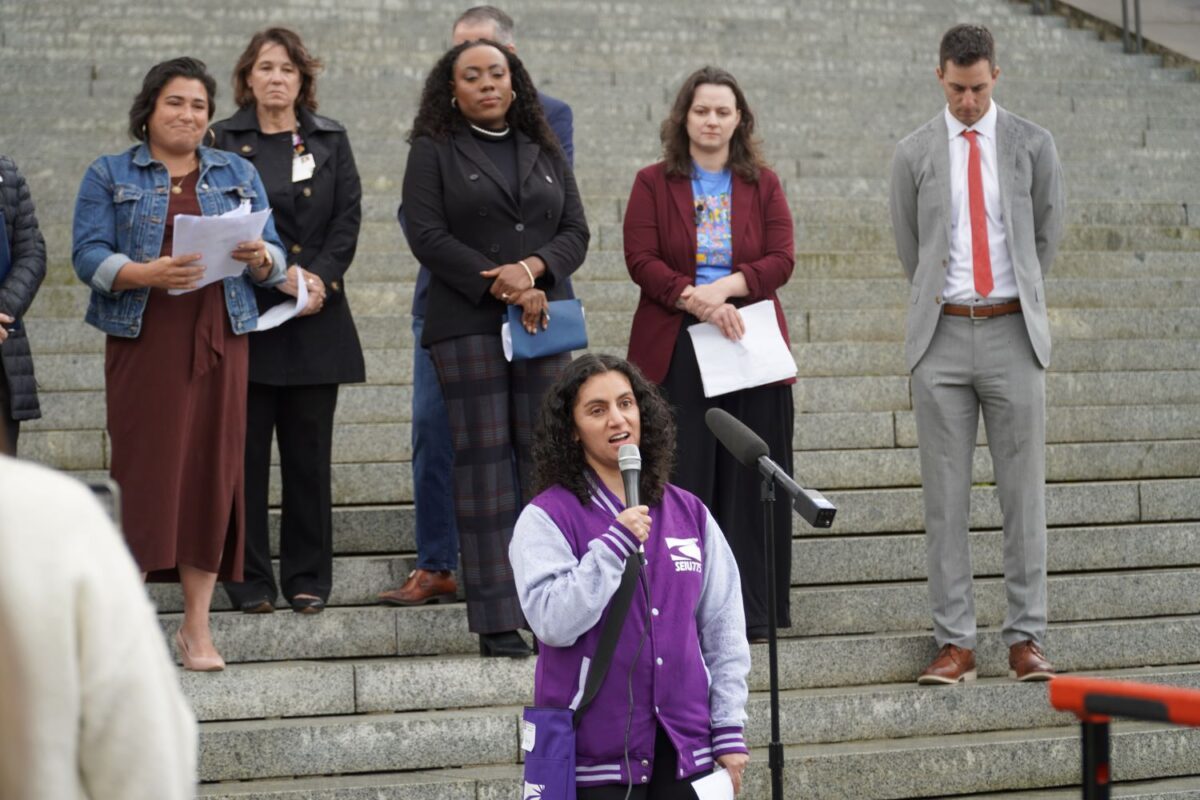The Federal Shutdown and Its Impact on Health Care, Women, Children, and Families
October 23, 2025

The current federal government shutdown, now the second longest in U.S. history, surpassed only by the 2018–2019 closure is creating mounting uncertainty across the country (Visual Capitalist).
In Washington State, that uncertainty is especially pressing. If the shutdown continues, hundreds of thousands of residents could soon face disruptions in critical programs like Basic Food, Head Start, and other essential services that help families meet basic needs. Meanwhile, recent federal policy changes enacted under H.R. 1, officially titled the “One Big Beautiful Bill Act,” have already begun reshaping access to health care and family supports for millions of Americans.
Medicaid Cuts and Maternal Health
Washington is among the states projected to be most affected by reductions to federal Medicaid funding under H.R. 1, with estimates suggesting at least 250,000 residents could lose coverage (KFF). Medicaid currently covers 45% of all births in Washington, and 70% of those occur in rural areas — regions already facing provider shortages and hospital closures (AP News, link).
Between 2015 and 2019, 89 labor and delivery units closed in rural hospitals across the U.S., largely due to low reimbursement rates. These closures have created care deserts that increase the risk of complications; rural residents now face a 9% higher likelihood of life-threatening complications or death during childbirth compared with those in urban areas (AP News).
H.R. 1 also reduces federal funding for Planned Parenthood, threatening access to birth control, cancer screenings, and prenatal care for tens of thousands of Washingtonians.
Access to affordable health care and income stability are two of the strongest predictors of maternal health outcomes. Because Black, Native, and other mothers of color already face higher rates of preventable, pregnancy-related death, these cuts risk deepening existing racial and geographic disparities (KFF).
Medicaid Work Requirements and Gender Disparities
For the first time, H.R. 1 introduces work requirements for Medicaid. While the vast majority of non-disabled adults under 65, roughly 92%, are already employed, the small share who are not includes many older women who left the workforce to care for children or aging relatives (Milbank Memorial Fund, CAP).
What the work requirements mean for this group of women, is that despite a lifetime of unpaid or undervalued caregiving work, they could lose their own access to health coverage precisely when they are most likely to need it.
Impacts on Refugees and Immigrant Women
H.R. 1 also limits access to food assistance and Medicaid for an estimated 30,000 lawfully residing noncitizens in Washington State, according to the Office of Financial Management (OFM).
Among those affected are refugees, asylees, immigrant survivors of domestic violence, and victims of human trafficking. This change eliminates long-standing, bipartisan protection for people fleeing violence and persecution and could force families fleeing violence or persecution into deeper instability (Food Research & Action Center).
Washington’s Response
Despite federal uncertainty, Washington State is working to maintain access to essential supports. The Washington State Women’s Commission’s Resource Center offers a single, statewide hub where residents can find information about available health care, nutrition, legal, and family services.
The Road Ahead
Government shutdowns and broad policy overhauls can have deep, lasting impacts on communities. The combined effects of funding interruptions and health-care restructuring reach beyond politics, influencing whether families can access food, health services, and safe childbirth.
As Congress continues negotiations, maintaining stability for women, children, and families remains a vital part of supporting the nation’s overall health and economic resilience.
Watch the full press conference: 10/22 Press Conference Federal Shutdown Policies
Sources:
- Associated Press. Rural hospitals are closing maternity wards. People are seeking options to give birth closer to home. (2023). https://apnews.com/article/rural-maternity-ward-closures-health-care-inequality-9a5b2b9b78aa176c91392d90c0b0f730
- Cascade PBS. Rural Washington hospitals brace for fallout from Medicaid cuts. (2025). https://www.cascadepbs.org/news/2025/09/rural-washington-hospitals-brace-for-fallout-from-medicaid-cuts
- Center for American Progress. “How the House Republican Bill Would Hurt Women and Families.” Center for American Progress, 2025. https://www.americanprogress.org/article/how-hr1-hurts-women-and-families
- Food Research & Action Center. The Far-Reaching Harmful Impacts of the Reconciliation Bill — on Families, Older Adults, Immigrants, and State Budgets. (2025). The Far-Reaching Harmful Impacts of the Reconciliation Bill — on Families, Older Adults, Immigrants, and State Budgets – Food Research & Action Center
- Kaiser Family Foundation (KFF). Racial Disparities in Maternal and Infant Health: Current Status and Efforts to Address Them. (2023). https://www.kff.org/racial-equity-and-health-policy/issue-brief/racial-disparities-in-maternal-and-infant-health-current-status-and-efforts-to-address-them/
- Milbank Memorial Fund. Who’s Affected by Medicaid Work Requirements? It’s Not Who You Think. (2023). https://www.milbank.org/publications/whos-affected-by-medicaid-work-requirements-its-not-who-you-think/
- Office of Financial Management, Washington State. Federal Government Shutdown Updates. (2025). https://ofm.wa.gov/federal-government-shutdown.
- Visual Capitalist. Charted: The History of U.S. Government Shutdowns. (2024). https://www.visualcapitalist.com/charted-the-history-of-u-s-government-shutdowns/



